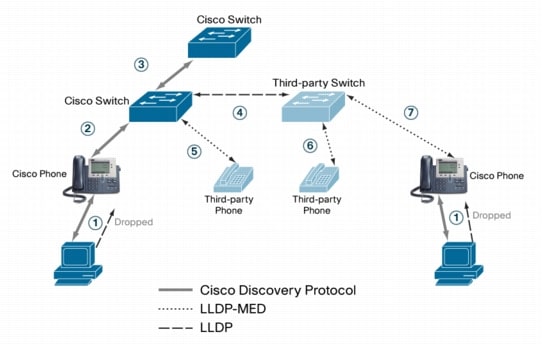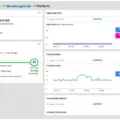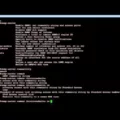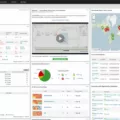Cisco Discovery Protocol (CDP) is a powerful tool for network management applications. It is a Layer 2 protocol that runs on all Cisco routers, bridges, access servers, and switches. CDP allows network administrators to easily discover what devices are connected to their network and what services they are providing.
The purpose of CDP is to provide an easy way to identify neighboring Cisco devices, even if they’re running different transparent protocols at the lower layer. It also helps network administrators quickly detect new devices that have been connected or removed from the network. By using CDP, network administrators can easily create a comprehensive inventory of their entire network setup and monitor for changes in real-time.
Cisco Discovery Protocol works by sending out special frames called “Hello” frames to its neighboring devices at regular intervals. These frames contain information about the device such as its IP address, type of hardware, software version, and other supported services or features. When another Cisco device receives these frames it responds with its own “Hello” frame and the two devices become neighbors with each other.
Once two devices become neighbors, they regularly exchange status messages which allow them to monitor each other’s activity such as configuration changes or uptime/downtime events. This makes it easier for administrators to keep track of the health and performance of their networks since they can be alerted if any unexpected changes occur in any component of the system.
Overall, Cisco Discovery Protocol is a valuable tool for monitoring and managing Cisco networks. With its help, network administrators can quickly identify neighboring devices, automatically generate an inventory list of all available components in their system, and receive alerts when any unexpected changes occur in any part of the system.

Cisco CDP Command
The Cisco Discovery Protocol (CDP) command is an important tool used in network management. It is a proprietary protocol developed by Cisco Systems that runs over Layer 2 (the data link layer) on all Cisco routers, bridges, access servers, and switches. It allows network administrators to discover information about their neighbors, such as the device’s hardware and software versions, IP address, and other details. CDP can also be used to establish connections between two devices that are directly connected over a Layer 2 medium. This can help in troubleshooting connectivity problems or configuring new connections. In addition, CDP can be used for many different purposes including monitoring the performance of neighbor devices and obtaining configuration information from connected devices.
Comparing CDP and LLDP
CDP (Cisco Discovery Protocol) and LLDP (Link Layer Discovery Protocol) are link layer protocols that enable the direct discovery of networked devices. CDP and LLDP allow devices to automatically exchange information about their capabilities and configuration. This exchange of information allows devices to easily identify each other and establish networks. CDP is a Cisco proprietary protocol, while LLDP is an open standard protocol.
CDP can be used to discover information such as IP addresses, hostnames, software versions, and port numbers of directly connected neighbors. It facilitates device management by allowing the user to quickly identify their network topology and troubleshoot issues.
LLDP is similar to CDP in that it allows for the discovery of neighboring devices, but does not send as much detailed information as CDP does. LLDP is mostly used for identifying networking equipment from different vendors on the same link layer segment. It also has a broader range of support for different types of media than CDP does.
Both protocols help in simplifying network management tasks and provide an efficient way to build networks in a secure manner.
The Benefits of CDP Cisco Switch
CDP (Cisco Discovery Protocol) is a Layer 2 protocol used on all Cisco-manufactured devices, such as routers, bridges, access servers, and switches. It allows network management applications to discover neighboring Cisco devices by sending periodic messages out of each of its active interfaces. CDP also provides information about the discovered device’s capabilities, software version, platform type, and IP address. This makes it easy for network administrators to obtain an inventory of their network and to quickly identify any new devices in the network. CDP is enabled by default on all Cisco switches and can be disabled if desired.
Layer of CDP Protocol
CDP (Cisco Discovery Protocol) is a layer 2 protocol, which means it operates at the data link layer of the OSI reference model. CDP is proprietary to Cisco and runs on all LAN and WAN media that support Subnetwork Access Protocol (SNAP). It is enabled by default on all Cisco devices including routers and switches, allowing these devices to discover and share information about neighbors connected to the same network segment. This information includes hardware type, IP address, software version, and port ID. CDP can also be used to monitor physical connections between devices by transmitting periodic hello messages.
CDP and the OSI Model
Cisco Discovery Protocol (CDP) is a Cisco proprietary protocol that operates at the very bottom of the OSI model, at Layer 2. CDP is used to discover information about neighboring devices, such as the type of hardware, software version, and active interfaces. It can be used by both Layer 2 and Layer 3 devices.
Differences Between Cisco LLDP and CDP
Cisco LLDP (Link Layer Discovery Protocol) and CDP (Cisco Discovery Protocol) are both layer two discovery protocols used to collect information from neighboring devices. The main difference between the two is that CDP is a Cisco proprietary protocol, while LLDP is an IEEE 802.1ab standard, meaning that non-Cisco devices can advertise information about themselves to Cisco network devices as well.
Cisco LLDP provides more detailed information than CDP, such as the chassis type and serial number, power source, and hardware capabilities of connected devices. LLDP also allows for better scalability than CDP since it allows any vendor’s device to advertise information to other vendors’ devices on the same network. In addition, LLDP has the capability to discover multi-vendor networks in a single protocol.
In contrast, CDP is limited to Cisco products only and does not provide detailed information about the connected device as LLDP does. It does not have the same scalability advantages either; it cannot discover multi-vendor networks using a single protocol.
Does CDP Utilize SNMP?
Yes, CDP uses SNMP. CDP stands for Cisco Discovery Protocol and is a proprietary protocol used by Cisco devices to discover information about neighboring devices on a network. SNMP (Simple Network Management Protocol) is an application-layer protocol that enables network administrators to manage network devices and monitor network performance, configurations, and traffic. By leveraging the CDP MIB (Management Information Base) with SNMP, network management applications can detect the type of device and the SNMP agent address of their neighboring devices, as well as send SNMP queries to those devices.
Understanding CDP in VLANs
CDP in VLAN is a way of using the Cisco Discovery Protocol (CDP) to discover devices on different VLANs. CDP is a Layer 2 protocol, which means it operates at the Data Link layer of the OSI model. It allows network devices to identify and learn information about each other, such as IP addresses, capabilities, and VLAN membership. With CDP in VLAN, devices can detect which other devices are connected to their local segment and what VLANs they belong to. This helps ensure that packets are sent where they need to go, allowing for better network performance and reliability.
Is CDP a Routing Protocol?
No, CDP (Cisco Discovery Protocol) is not a routing protocol. It is a layer 2 protocol used for discovering information about neighboring devices connected to the same network segment. CDP provides information about directly-connected Cisco equipment, such as the operating system version and IP address. This information can be used by network administrators to manage their networks more efficiently. However, it does not support any type of dynamic routing or packet forwarding.
Understanding the Basics of CDP in Networking
CDP (Cisco Discovery Protocol) is a proprietary networking protocol developed by Cisco Systems that helps in discovering information about Cisco devices connected to the same network. It works by sending periodic multicast messages that contain information about the device, such as its model and IP address. This information can then be used to identify and manage the device from a centralized location. CDP is enabled by default on all Cisco devices and runs over Layer 2 of the OSI model.
Each time a device receives a CDP packet, it stores the packet’s information in its local cache, which is then used to build a local view of the network topology. CDP packets are sent at regular intervals and are received by adjacent devices on the same LAN segment, creating an automatic mapping of neighboring devices and their respective functions. This data can be displayed using various monitoring tools such as show commands or GUI applications like Cisco Network Assistant or Cisco Prime LAN Management Solution (LMS).
In addition to providing network discovery capabilities, CDP also has other features such as power management, VLAN membership details, trunking status, and more. With these capabilities, network administrators can easily monitor and troubleshoot their networks without having to physically inspect each device.
Comparing CDP and OSPF
CDP (Cisco Discovery Protocol) is a layer 2 protocol used by Cisco-based devices to detect and identify directly attached devices. It uses frames to gather information about its neighbors’ capabilities, such as hardware and software version numbers, IP addresses, and VLAN membership. CDP is a Cisco proprietary protocol and will only work with other Cisco-based devices.
OSPF (Open Shortest Path First) is a link-state routing protocol used to exchange network topology information between routers in the same autonomous system. It works by having each router advertise its Link State Advertisement (LSA) which contains information about the links it has and the cost associated with each link. OSPF builds a topology map of the entire network based on this information, allowing it to calculate the best route between two points in the network. Unlike CDP, OSPF is not proprietary and can be used with any vendor’s equipment.
Conclusion
In conclusion, CDP (Cisco Discovery Protocol) is a device discovery protocol developed by Cisco that runs over Layer 2 on all Cisco-manufactured devices. It allows network management applications to discover and identify Cisco devices that are nearby, enabling marketers to create more targeted and personalized marketing campaigns. CDP is an extremely useful protocol for managing large networks, as it helps network administrators quickly locate and troubleshoot any issues that may arise.








